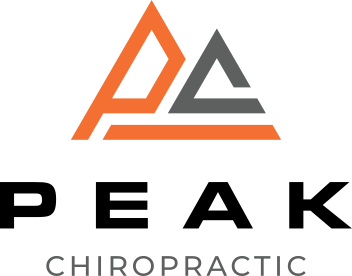When you consider the techniques designed to alleviate back pain, it's clear they tackle both the physical and psychological dimensions of discomfort. You're not just stretching or applying heat; you're building resilience through core stability, enhancing your awareness, and making ergonomic adjustments to your environment. Each method plays a vital role in reducing strain and promoting recovery. But what happens when these strategies are combined? Understanding their collective impact could change how you approach your back pain management.
Understanding Back Pain
When you experience back pain, it's essential to understand its underlying causes and how they affect your daily life. Back pain isn't just a simple ache; it can stem from various sources, including muscle strain, poor posture, or underlying medical conditions. Identifying the root cause can help you find effective relief and prevent future issues.
You might notice that your pain worsens after certain activities, like lifting heavy objects or sitting for long periods. These patterns can provide valuable clues about what's going on with your body. For instance, if your pain intensifies after slouching at your desk, it may indicate that your posture needs attention.
Additionally, consider how your lifestyle impacts your back health. Factors like obesity, lack of exercise, and stress can contribute to back pain. If you're carrying extra weight, it puts additional strain on your spine.
Conversely, engaging in regular physical activity strengthens your core muscles, providing better support for your back.
Emotional stress can also lead to muscle tension, which might manifest as back pain. Being aware of these connections can empower you to make changes that improve your overall well-being.
The Role of Physical Therapy
Physical therapy plays an essential role in managing back pain by creating personalized treatment plans tailored to your needs.
These plans often focus on strengthening your core muscles, which can provide better support for your spine.
Additionally, physical therapists employ various pain management techniques to help you regain mobility and reduce discomfort.
Personalized Treatment Plans
Back pain can be a complex and frustrating experience, but personalized treatment plans, particularly those that incorporate physical therapy, can offer significant relief.
You'll find that a tailored approach addresses your specific needs, helping you regain mobility and reduce pain. Instead of a one-size-fits-all solution, your treatment plan might include a combination of exercises, manual therapy, and education about proper body mechanics.
During your initial evaluation, a physical therapist will assess your condition and develop a plan that targets your unique symptoms and lifestyle. This individualized approach can help you understand the underlying causes of your back pain, making it easier to engage in activities that promote healing.
As you progress through therapy, your therapist will adjust your plan based on your feedback, ensuring you're always challenged but not overwhelmed.
By following a personalized treatment plan, you're more likely to see improvements in your strength, flexibility, and overall function. This active involvement in your recovery fosters a sense of empowerment, motivating you to continue working towards pain relief and a healthier back.
Embrace this journey, and you'll be on your way to feeling better.
Strengthening Core Muscles
A strong core plays an essential role in alleviating back pain and enhancing overall stability. When you strengthen the muscles in your abdomen, back, and pelvis, you provide better support for your spine. This support reduces strain on your back during daily activities, making it less likely for pain to develop or worsen.
Physical therapy often focuses on core strengthening exercises tailored to your specific needs. These exercises help build endurance and flexibility, allowing you to maintain proper posture and alignment.
You'll engage in movements that target not just your abs but also your obliques and lower back muscles. As you progress, therapists encourage you to incorporate functional movements that mimic real-life activities, which helps reinforce the strength you've gained.
The goal is to create a stable foundation that can withstand the stresses of everyday life.
Pain Management Techniques
Managing pain effectively requires a multifaceted approach, and physical therapy plays an essential role in this process. When you experience back pain, physical therapists assess your condition and develop a tailored treatment plan that addresses your specific needs. They equip you with techniques to manage pain and improve mobility.
Through targeted exercises, therapists guide you in strengthening muscles that support your spine, which helps alleviate pressure and reduces discomfort. They'll also teach you proper body mechanics to prevent future injuries, ensuring you move safely during daily activities.
Manual therapy techniques, like joint mobilization, can also be beneficial. These hands-on methods can relieve tension and improve circulation in affected areas. Additionally, physical therapists may incorporate modalities such as heat, ice, or electrical stimulation to further manage pain and enhance recovery.
Engaging in regular physical therapy sessions not only accelerates healing but also empowers you with the knowledge and skills to maintain your well-being long-term.
Benefits of Chiropractic Adjustments
Relief from back pain often feels elusive, but chiropractic adjustments can provide significant benefits. When you visit a chiropractor, you're not just getting a quick fix; you're engaging in a holistic approach that focuses on your overall well-being.
These adjustments aim to realign your spine and improve your body's function, which can lead to reduced pain and enhanced mobility.
One of the primary benefits you'll experience is pain relief. By correcting misalignments in your spine, chiropractic care can alleviate pressure on nerves and tissues, helping you feel better in a shorter time. This means you can return to your daily activities with less discomfort.
Moreover, chiropractic adjustments can enhance your range of motion. Many people with back pain find that their mobility is restricted. Through targeted adjustments, you can regain flexibility, allowing you to move more freely and comfortably.
Another advantage is the preventative aspect. Regular chiropractic visits can help keep your spine in alignment, reducing the likelihood of future injuries or flare-ups. This proactive approach promotes long-term health, ensuring that you maintain an active lifestyle.
Finally, chiropractic care often complements other treatment methods, such as physical therapy or exercise. By working alongside these techniques, you can create a thorough pain management plan tailored to your needs.
Mindfulness and Pain Management
Mindfulness techniques can be a powerful tool in your pain management strategy. By focusing on the present moment, you can cultivate a greater awareness of your body and its sensations, which helps you respond more effectively to pain. Instead of resisting discomfort, mindfulness encourages you to acknowledge it without judgment. This shift in perspective can reduce the emotional toll pain takes on you.
Practicing mindfulness involves techniques like deep breathing, meditation, or guided imagery. You might find that simply taking a few minutes each day to sit quietly and observe your thoughts can help you create a sense of calm.
As you become more aware of your body's sensations, you can learn to differentiate between physical pain and your emotional reactions to it. This awareness can empower you to manage pain more effectively.
Studies show that individuals who incorporate mindfulness into their pain management report lower pain levels and improved quality of life. You may also notice that mindfulness helps reduce anxiety and stress, which often exacerbate pain.
As you practice, you might discover that you're better equipped to handle pain flare-ups, allowing you to engage more fully in your daily activities.
Incorporating mindfulness into your routine doesn't require significant time or resources. Start small—set aside just a few minutes each day.
Over time, you'll likely find that these techniques not only enhance your pain management but also contribute to your overall well-being.
Importance of Ergonomics
Ergonomics plays an essential role in preventing back pain, especially for those who spend long hours at desks or engaged in repetitive tasks. By optimizing your workspace and daily movements, you can greatly reduce the strain on your back and improve your overall comfort.
Start by evaluating your workstation. Your chair should provide adequate lumbar support, allowing your lower back to rest comfortably. Adjust your chair height so your feet are flat on the floor, and your knees are at a 90-degree angle. Position your desk and computer screen at eye level to minimize neck and back strain. If you're using a laptop, consider a stand or an external keyboard to maintain proper alignment.
Pay attention to your posture, too. Sit up straight, and avoid slouching or leaning forward. It's easy to lose focus on your body alignment, especially during long tasks, but maintaining good posture can make a considerable difference in how your back feels.
When you're engaged in repetitive tasks, take regular breaks to stretch and move around. This helps alleviate tension and prevents stiffness.
Simple adjustments, like using a headset for phone calls or keeping frequently used items within arm's reach, can also enhance your ergonomic setup.
Stretching and Strengthening Exercises
Stretching and strengthening exercises are key to improving your back health.
By enhancing your flexibility, you can reduce tension and prevent injuries.
Plus, building muscle support helps stabilize your spine and keeps discomfort at bay.
Improved Flexibility Benefits
Improved flexibility plays an essential role in alleviating back pain, and incorporating specific stretching and strengthening exercises into your routine can make a significant difference.
When you focus on flexibility, you enhance your range of motion, allowing your joints and muscles to move more freely. This increased mobility can help reduce stiffness and tension that often contribute to discomfort.
By regularly engaging in stretching exercises, you're not only loosening tight muscles, but you're also promoting better circulation. Improved blood flow brings essential nutrients to your muscles, aiding in recovery and overall function.
Strengthening exercises complement this by stabilizing your core and improving your posture, which can further alleviate pressure on your spine.
You'll find that as your flexibility improves, everyday activities become easier and less painful. Tasks like bending, lifting, or even sitting for extended periods won't feel as taxing.
Plus, a flexible body is more resilient to injuries, meaning you'll be less likely to experience setbacks that could worsen your back pain.
Enhanced Muscle Support
Building on the benefits of flexibility, enhancing muscle support is essential for maintaining a healthy back. When you engage in stretching and strengthening exercises, you not only improve your flexibility but also create a sturdy support system for your spine. This can lead to reduced pain and a greater range of motion.
Here are four key exercises to incorporate into your routine:
- Planks: Strengthen your core, providing stability to your back.
- Bridges: Target the glutes and lower back, promoting better posture.
- Bird-Dogs: Improve balance and coordination while activating your core and lower back muscles.
- Hamstring Stretches: Increase flexibility in the hamstrings, reducing strain on the lower back.
The Impact of Posture
Good posture plays an essential role in preventing and alleviating back pain. When you maintain proper alignment, your spine and surrounding muscles function more efficiently, reducing strain on your back. Slouching or hunching over can lead to muscle fatigue and imbalances, making you more susceptible to discomfort. By consciously keeping your shoulders back and your head aligned with your spine, you can considerably decrease the risk of developing chronic pain.
You mightn't realize it, but your everyday activities greatly impact your posture. Whether you're sitting at a desk, lifting objects, or even standing in line, being mindful of your posture can make a world of difference. For instance, when sitting, confirm your feet are flat on the ground, your knees are at a 90-degree angle, and your back is supported. This helps distribute weight evenly and prevents unnecessary pressure on your lower back.
Additionally, if you spend long hours in front of a screen, consider using ergonomic furniture to enhance your posture. An adjustable chair and a monitor at eye level can encourage you to sit straight without strain. Remember, you're not just doing your back a favor; good posture can also improve your overall mood and energy levels.
Incorporating regular stretches and exercises that strengthen your core can further support your posture. When you focus on maintaining alignment and balance in your body, you'll notice a considerable reduction in back pain, allowing you to enjoy daily activities with ease.
Hot and Cold Therapy
Maintaining proper posture can greatly reduce back pain, but sometimes you need additional relief methods to ease discomfort. Hot and cold therapy are two effective techniques that can help you manage pain and promote healing. Each method works differently, targeting inflammation and improving circulation.
Here's how you can effectively use hot and cold therapy:
- Use Heat for Muscle Relaxation: Applying heat, such as a warm towel or heating pad, can relax tight muscles and improve blood flow. This is especially helpful for chronic pain or stiffness.
- Apply Cold for Inflammation: Cold packs or ice wrapped in a cloth can reduce swelling and numb sharp pain. It's ideal for acute injuries or flare-ups, as it constricts blood vessels and decreases inflammation.
- Alternate Between Heat and Cold: For some, alternating between hot and cold therapy can provide the best results. Start with heat for 15-20 minutes, then switch to cold for another 15-20 minutes. This combination can help ease tension and reduce swelling effectively.
- Listen to Your Body: Pay attention to how your body responds. If one method feels more effective than the other, stick with it. Everyone's pain is unique, so find what works best for you.
Lifestyle Changes for Prevention
Incorporating lifestyle changes can greatly reduce your risk of developing back pain in the first place. One of the most impactful changes you can make is to stay active. Regular exercise strengthens your back muscles, improves flexibility, and promotes better posture. Aim for at least 30 minutes of moderate activity most days of the week. Activities like walking, swimming, or yoga can be especially beneficial.
Another vital change is to pay attention to your posture, whether you're sitting at your desk or lifting heavy objects. Use ergonomic furniture, keep your feet flat on the ground, and avoid slouching. When lifting, bend at your knees and keep the object close to your body to prevent strain.
Maintaining a healthy weight is also essential. Excess weight puts added stress on your spine and back muscles, increasing your risk of pain. A balanced diet rich in fruits, vegetables, whole grains, and lean proteins can help you achieve and maintain a healthy weight.
Don't underestimate the importance of sleep. Prioritize getting enough restful sleep each night, as this allows your body to recover and reduces tension in your muscles. Investing in a supportive mattress and pillow can make a significant difference.
Finally, managing stress through mindfulness, meditation, or hobbies can alleviate tension in your body, which may contribute to back pain.
Conclusion
Incorporating these techniques into your routine can greatly improve your back pain management. By focusing on physical therapy, chiropractic care, mindfulness, and ergonomic adjustments, you're not just treating the symptoms but addressing the root causes. Strengthening exercises and proper posture enhance your resilience, while hot and cold therapies offer immediate relief. Remember, making lifestyle changes now can prevent future issues, empowering you to lead a healthier, pain-free life. Take charge of your well-being today!



